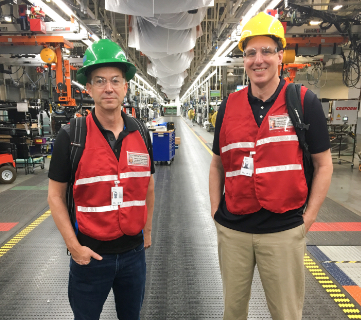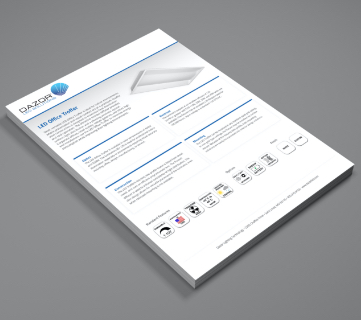Lumen vs Footcandle vs Lux
How Bright is the Light?
When a customer is evaluating lighting technology, a common question asked is “how bright is the light?” As lighting technology changes, the standard measurement of “brightness” for traditional lighting technologies isn’t always the most useful in determining how much light you need using today’s LED technology. Understanding the terminology and differences in today’s vs yesterday’s lighting technologies will help you choose the right fixture for your application.
Lumens
Lumens are defined as a measure of the total amount of light emitted from a source.
Traditional lighting technology is typically a filament-based light bulb, such as an incandescent, halogen or metal halide bulb. Or, a gas-based fluorescent bulb that lights when an electrical current excites mercury vapor and causes its phosphors to glow. These technologies convert electricity into photons of light and emit light, quantified as lumens, in all directions around the bulb (e.g. omnidirectional).
If this type of light bulb was hanging suspended from a ceiling truss by itself, a significant amount of its light wouldn’t be directed downward towards the work surface where it’s most needed in an industrial production environment. So, these light sources are surrounded by a reflector which is intended to capture as much of the emitted light as possible and redirect it downward. This is not the most efficient way to channel light (e.g. lumens) where you need it.
By design, an LED light fixture emits light in a particular direction. An LED fixture generally does not have the need for a reflector (not necessarily the case with an LED light bulb); rather, it efficiently directs the emitted lumens (e.g. light) towards the work surface. Therefore, it’s likely you do not need the same quantity of lumens emitted from a directional LED light fixture as you would with a traditional omnidirectional light fixture in order to achieve the same quantity of light on a work surface. In other words, comparing lumens between technologies is not an apples-to-apples comparison because most LED fixtures are much more efficient in delivery of lumens to a work surface than older technology light sources.
Footcandles and Lux
Footcandles is the Imperial measurement and Lux is the Metric measurement of the same thing. 1 footcandle = 10.764 lux. Both quantify the amount of light falling on a specific point or object. In practice, this is the measurement of most interest to people because it lessens the importance of how many lumens are emitted from a light source and the question of how efficiently a light fixture delivers the emitted lumens to a work surface.
Many companies have a standard for how many footcandles (or lux) are required for a particular area within their industrial or office workspace. Many follow illuminance standards for particular indoor and outdoor environments published by the IES (International Engineering Society), OSHA, or other authoritative body.
Measuring and Planning Light Levels
Determining your existing light levels is easily accomplished by use of a calibrated light meter. A light meter has a sensor that quantifies in footcandles (or lux) the amount of light on a particular surface or at a particular height.
Determining a lighting layout in order to produce a certain quantity of footcandles at a particular height above a finished floor is much more complex. It involves the calculating the size of the area to be illuminated, the mounting height of the light fixture, and how much light each fixture produces among other things. This lighting design layout and specification is generally determined with the use of photometric software and the specific attributes of the recommended light fixtures (IES files).
Assessing your lighting needs will take a little time and effort. A number doesn’t tell the whole story by itself, nor will it provide the fixture that is best suited for you. Taking into account the area, the application, any obstructions that may block the light output, and the fixture chosen will reduce the frustration and disappointment that comes with an uninformed purchase. Only a qualified lighting professional is equipped to ensure your lighting requirements will be met at the completion of a lighting upgrade or new installation.




